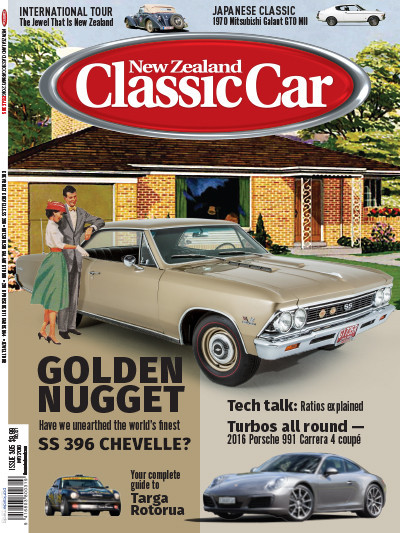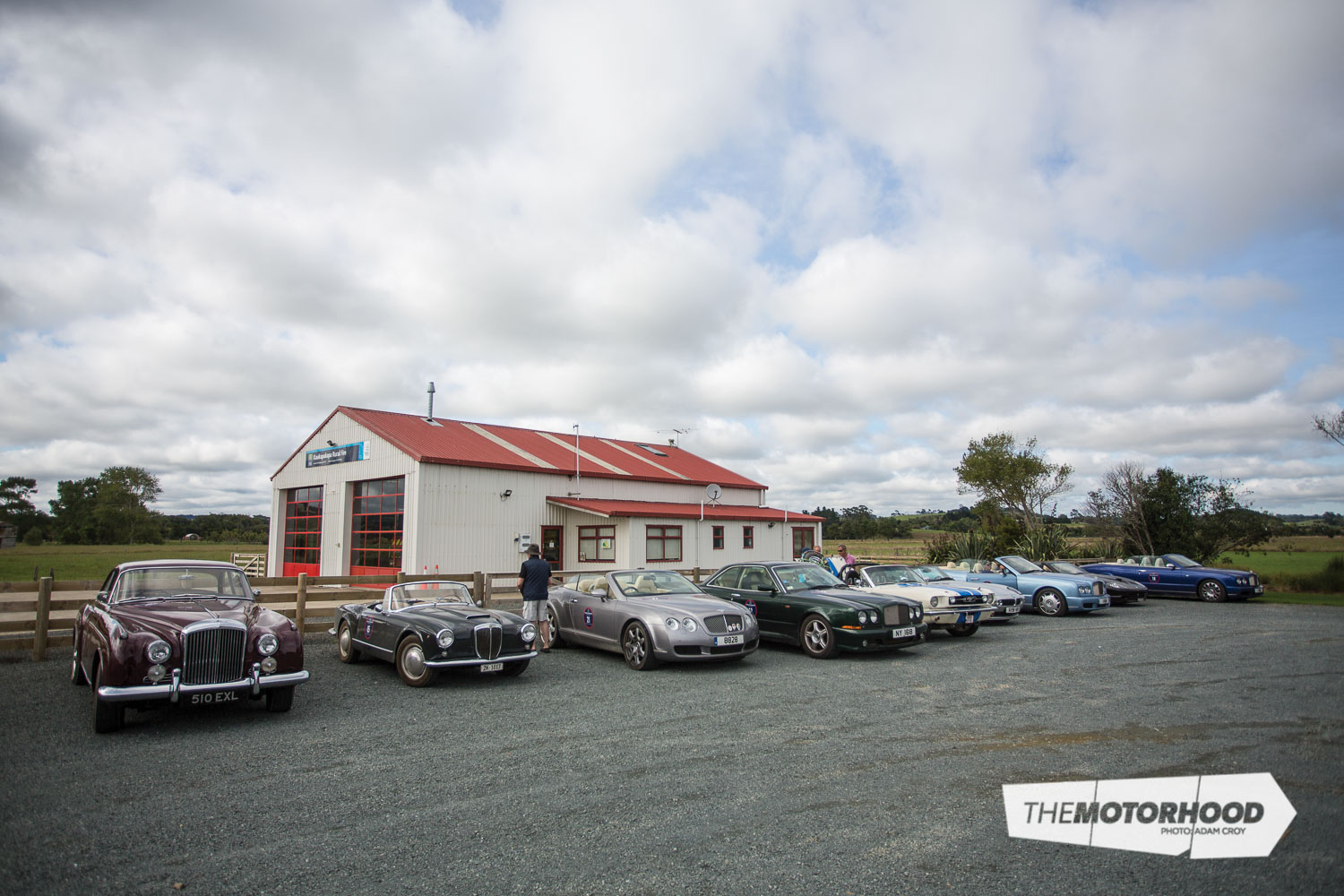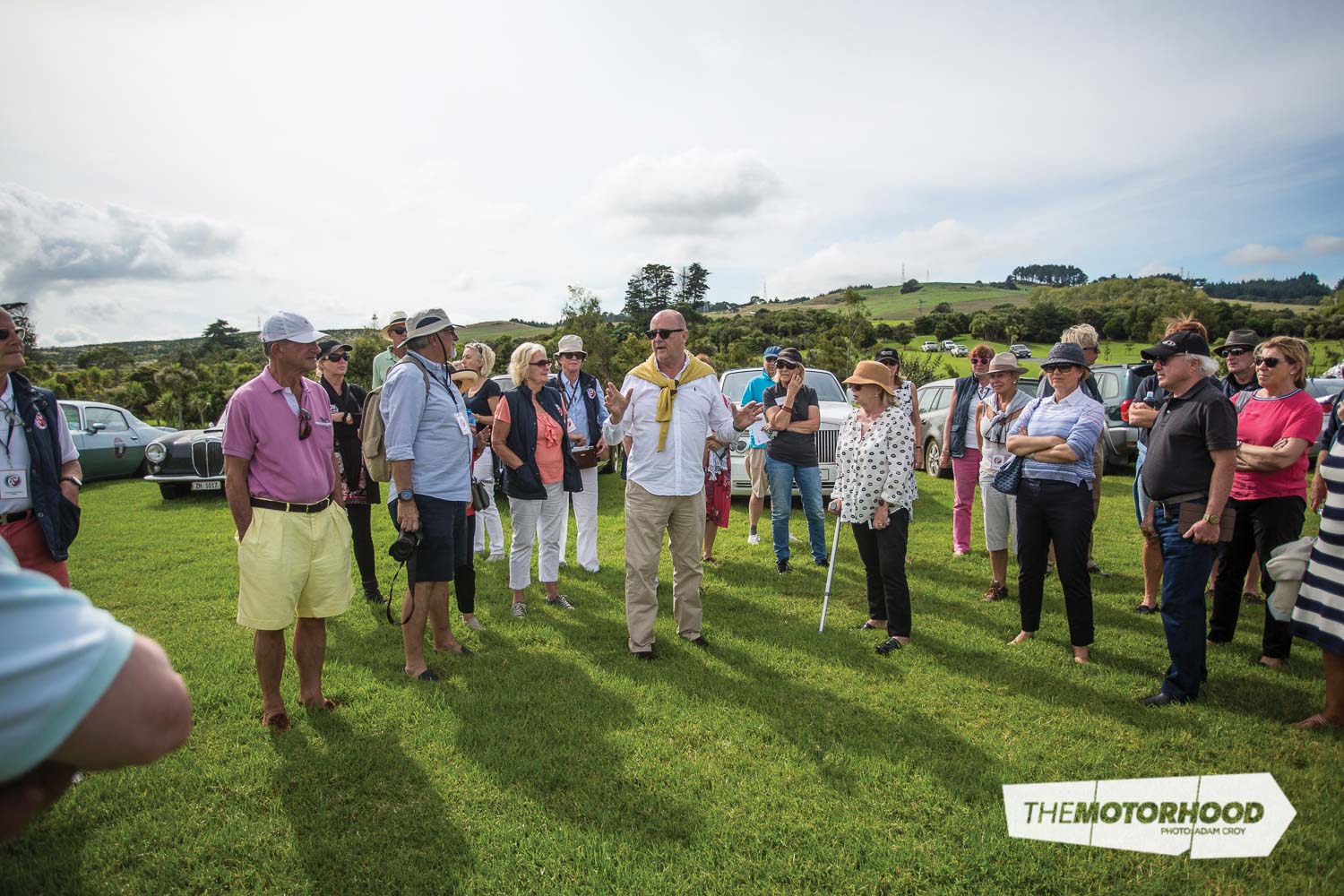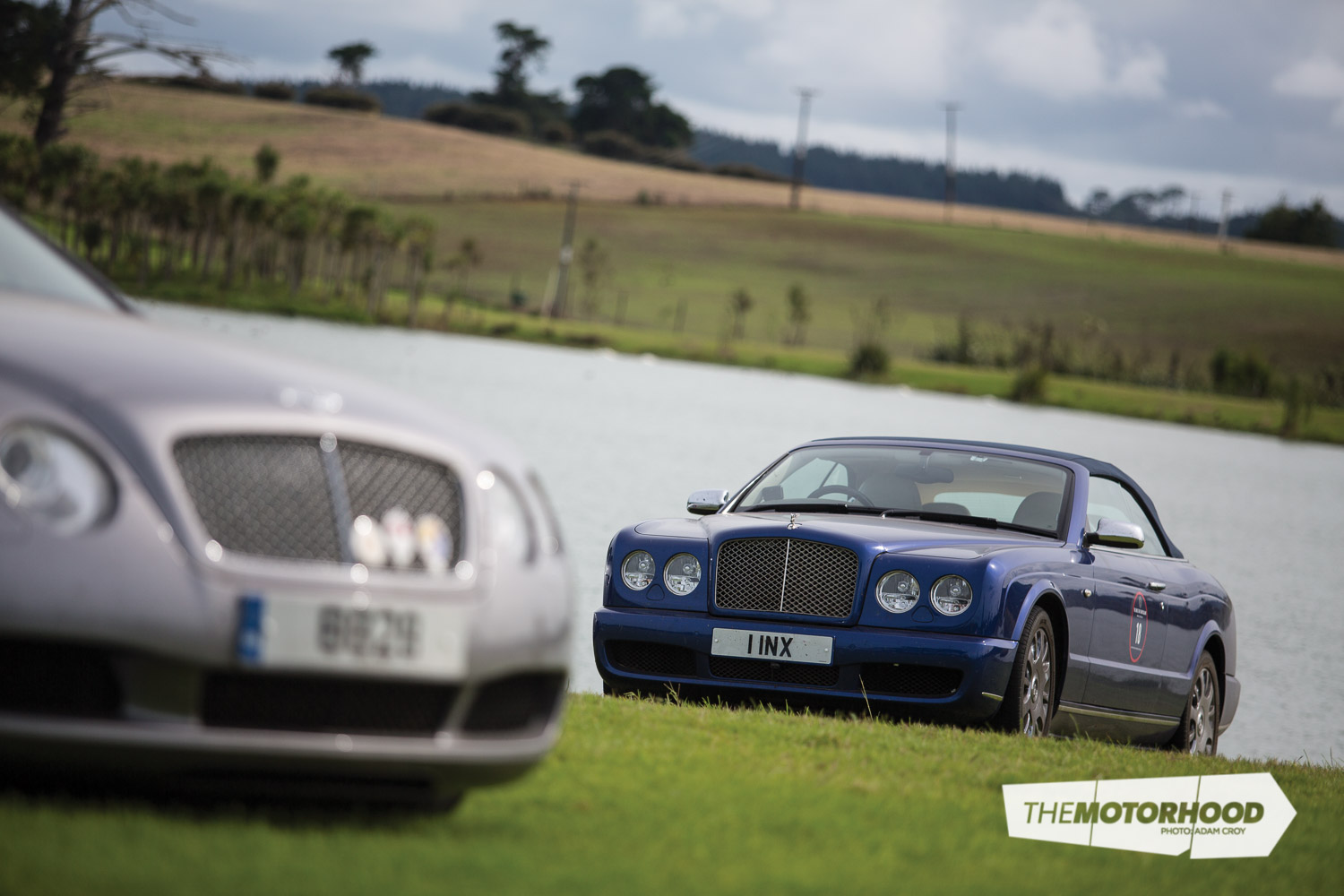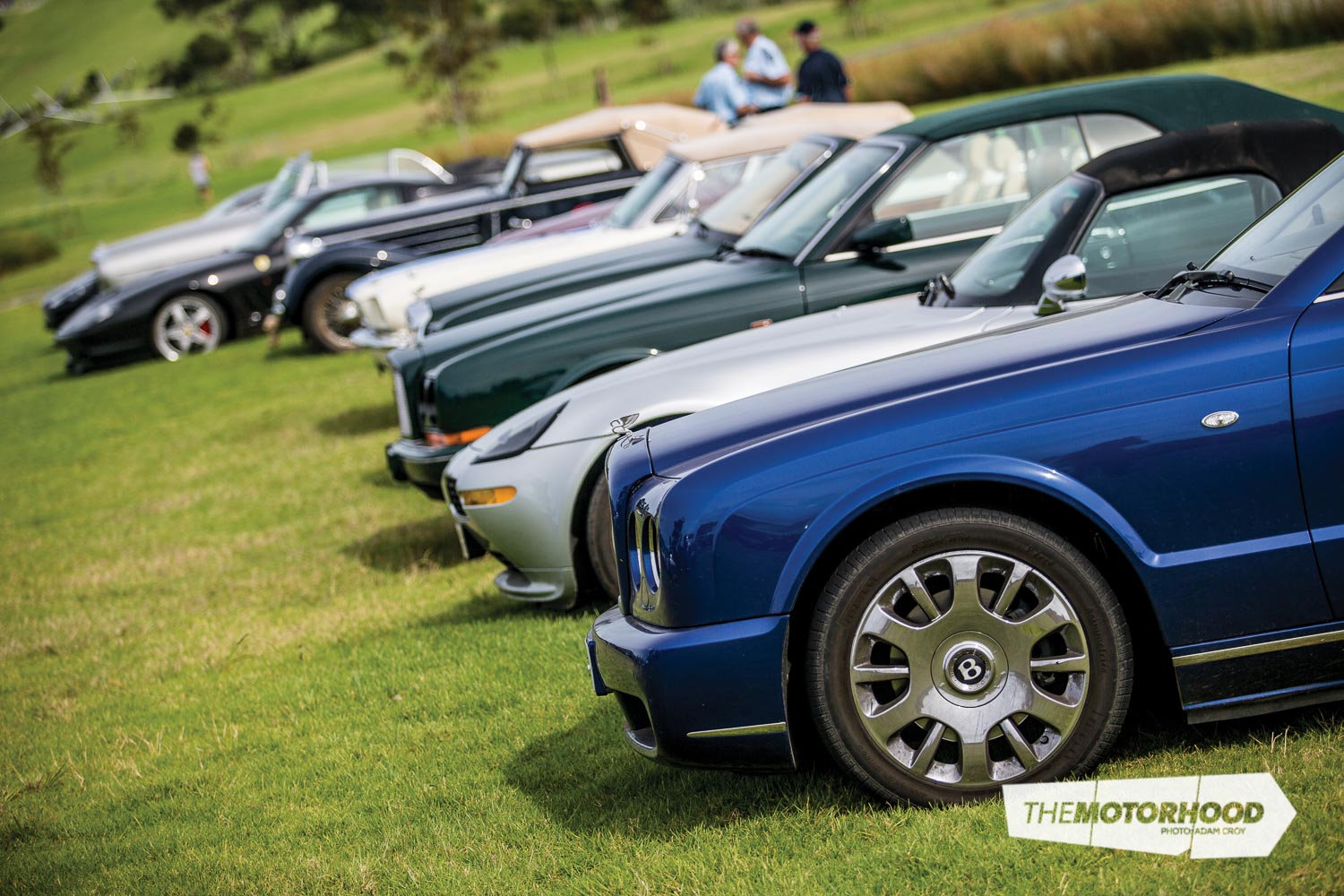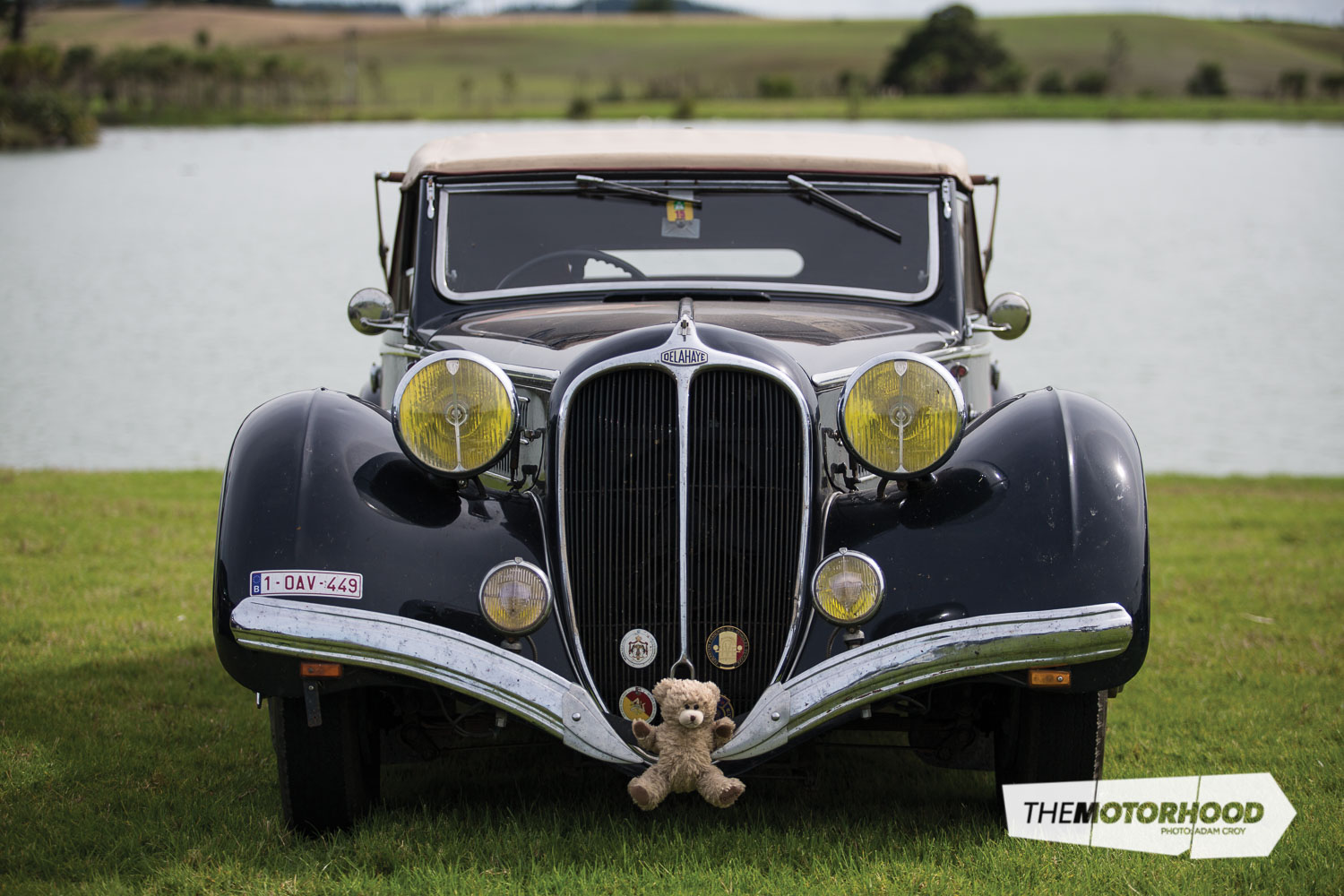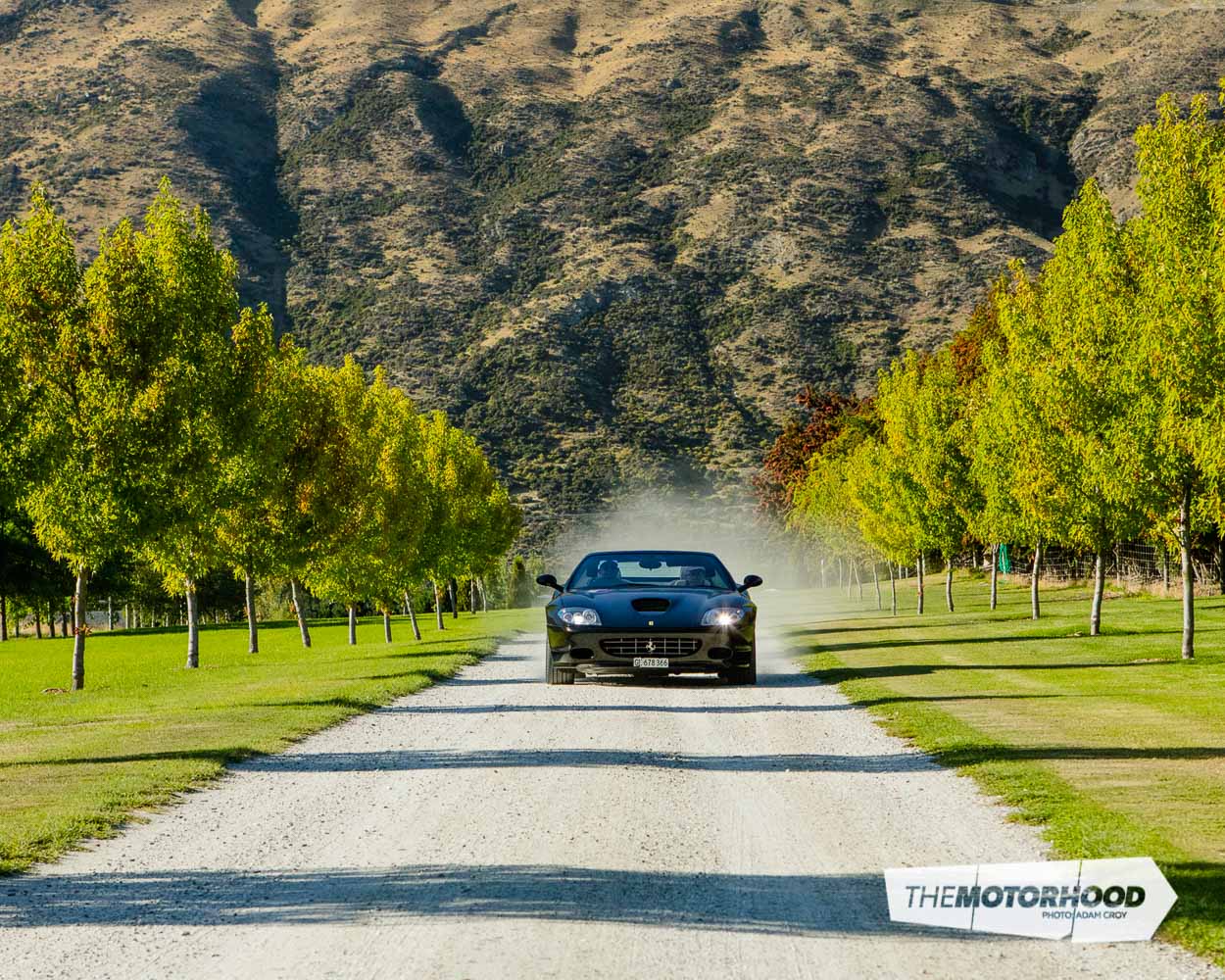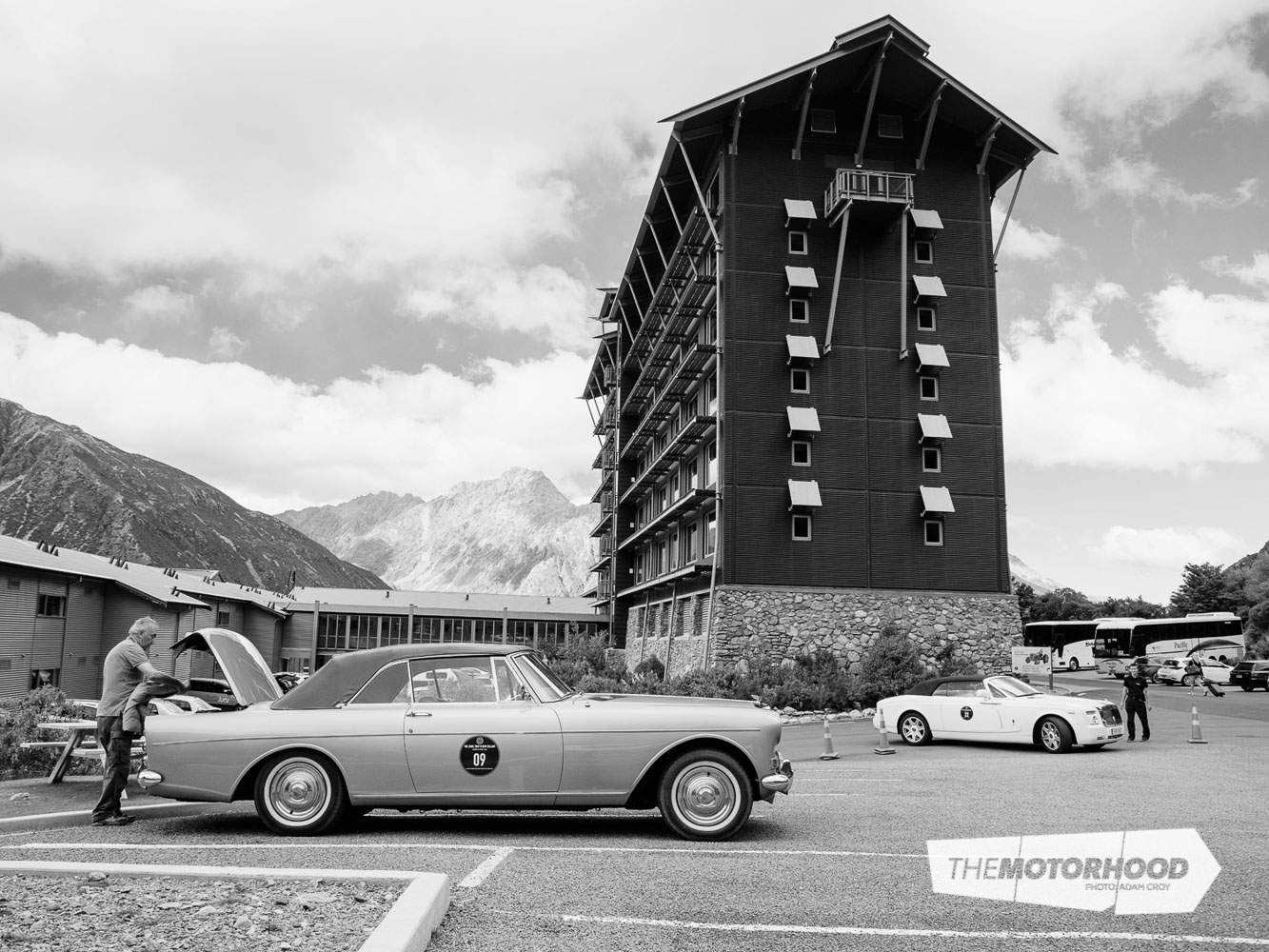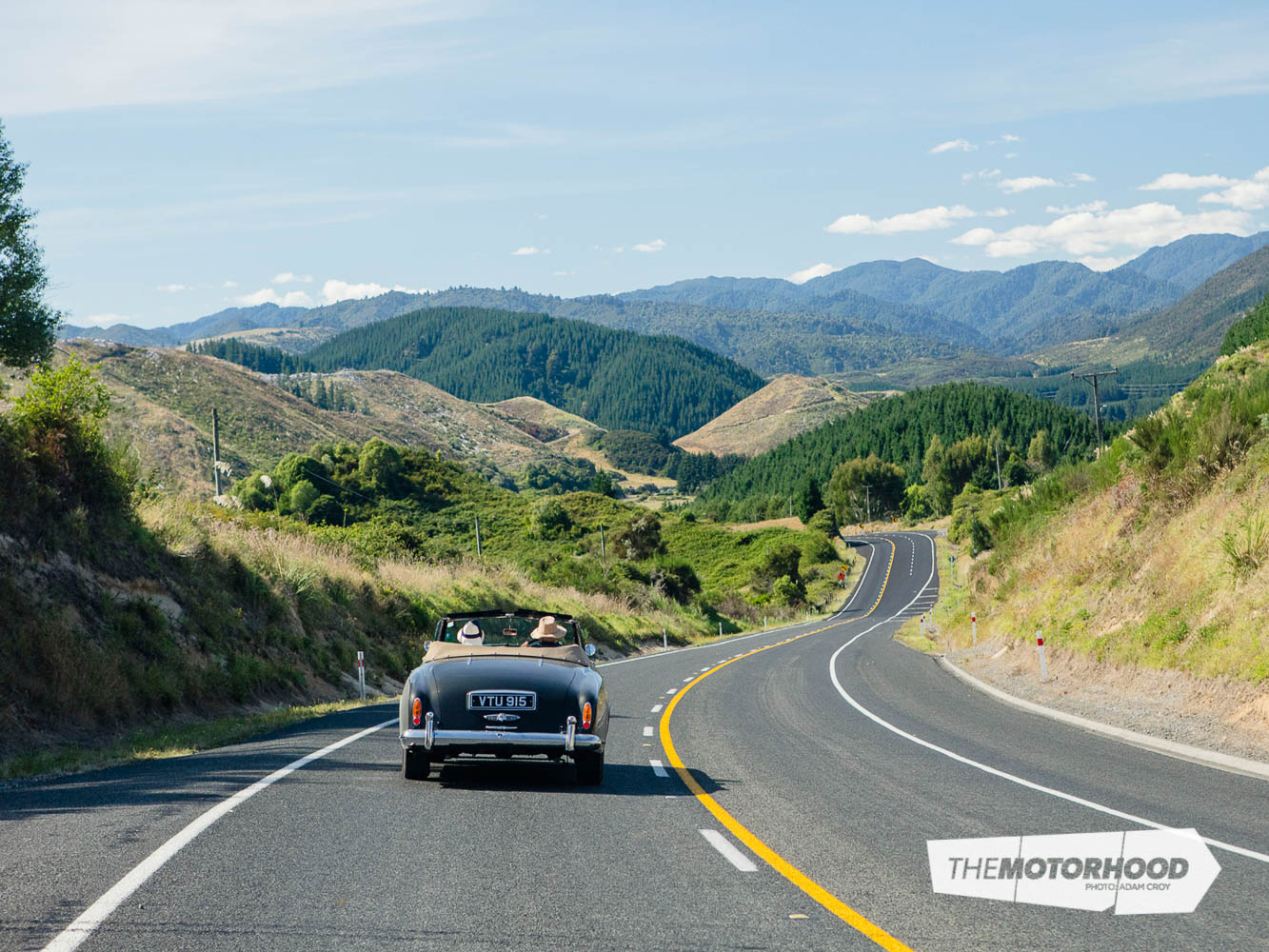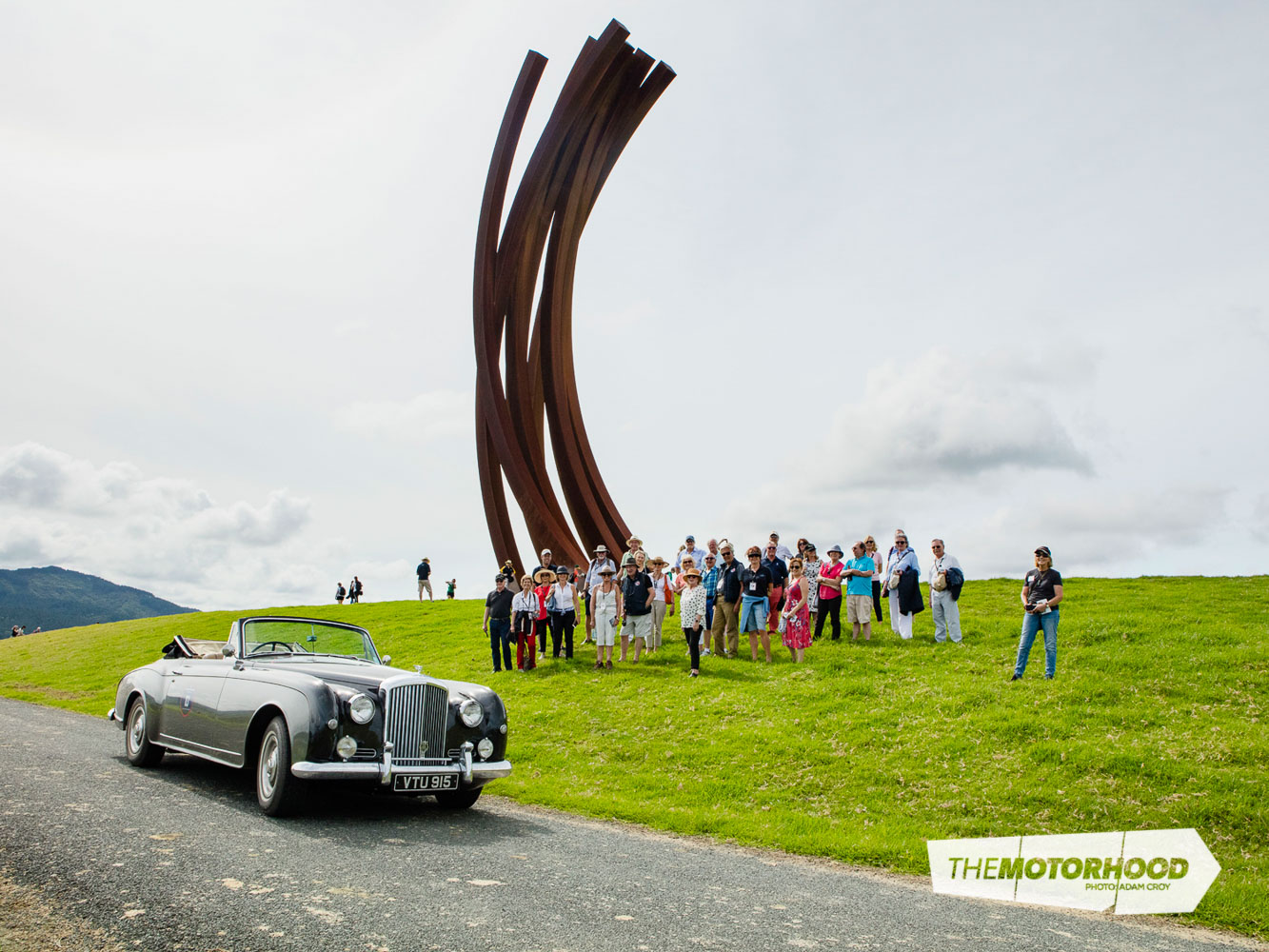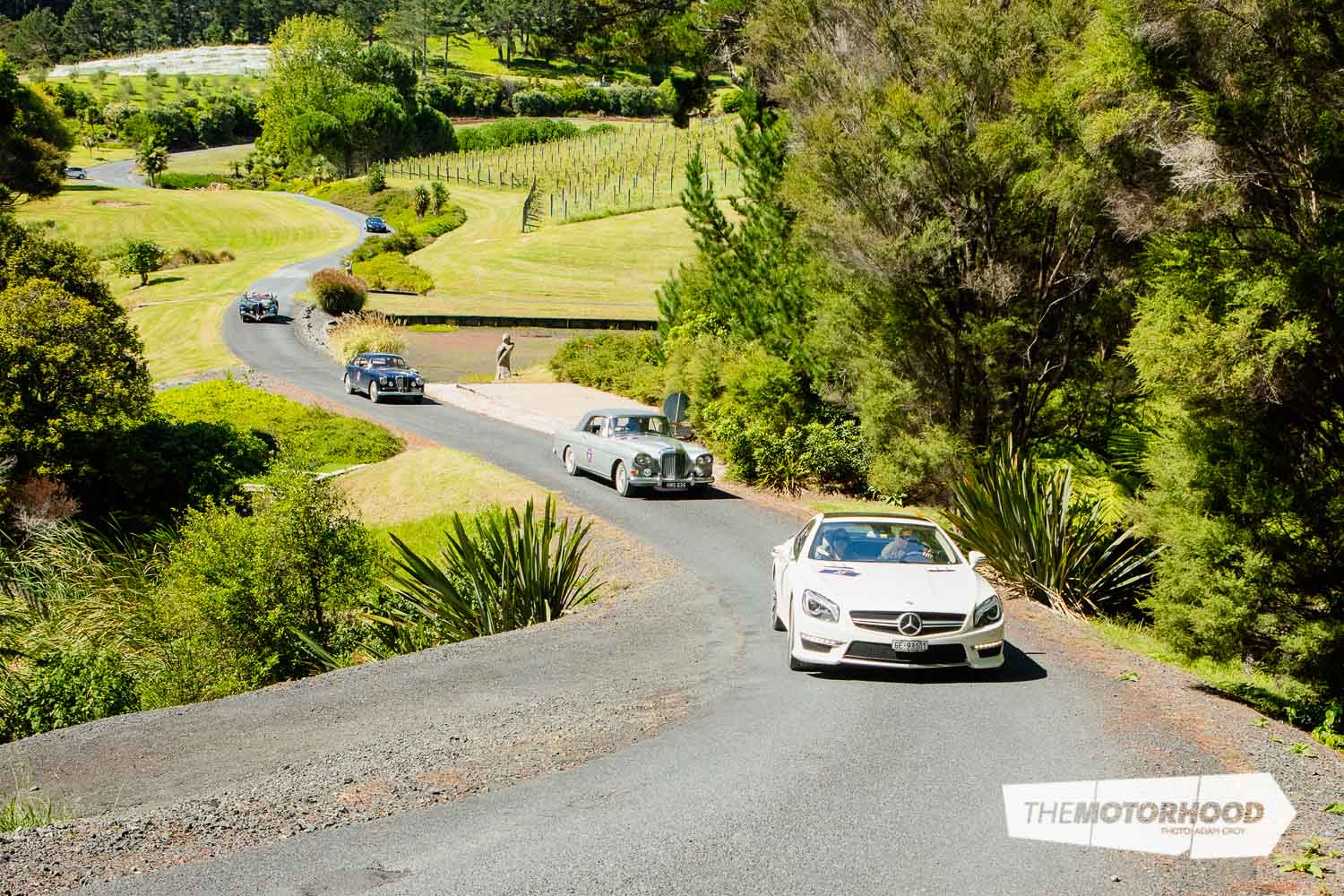Jewel Tours brought a fleet of wild, wonderful, and expensive cars to take a three-week driving tour around New Zealand. We managed to jump on board with the chairman, Jonathon Lyons, for a hair-raising drive to from SkyCity to Gibbs Farm.

As we drove into the SkyCity Grand car park, it didn’t take us long to find what we were looking for. Lined up was a collection of 22 cars ranging from a 1938 Delahaye 135 MS Competition convertible and a 1958 Lancia Aurelia B205 to a 2010 Rolls-Royce Phantom drophead coupé and a 2012 Mercedes-Benz SL63 AMG. These cars arrived quietly at the Dunedin Port some four weeks earlier from all around the world to take part in what some of us might consider the trip of a lifetime, The Jewel that is New Zealand.
The chairman
The star of the show is the self-proclaimed chairman, Jonathon E Lyons. If you had to make a caricature of an upper-class Englishman, you’d base it on the chairman. A chain-smoking round-vowelled raconteur and gentleman, Jonathon — whose first tour was in Jordan, in 2003 — has since then organized and run two events annually.
The organization of one of these tours begins around 18 months out when Jonathon and his long-time lieutenant and general go-to-guy, Leandro, take a recce of their destination. They’ll spend a few weeks driving around the country, taking in the local roads and, more importantly, identifying the best food, wine, and experiences available to their clients.

Best route
Once Jonathon and Leandro are satisfied they have selected the best of the best for their tour group, they employ a professional navigator to find the most exciting and picturesque roads on offer. This route is translated into a comprehensive guidebook marking each kilometre of the journey from start to finish (which also keeps the navigators busy, Jonathon says).
With the tour’s guest list finalized, they go about selecting the vehicles for the trip. While Bentleys are most certainly a favourite (and why wouldn’t they be?), there are some magical vehicles on tour. Unlike other rallies and competitive events, these tours are about driving a car you love with the one you love, and spending time with good friends. So, how does one go about selecting a car for the rally? Comfort, it seems, is the most important factor. If you’re going to spend four or five hours a day behind the wheel, you want to make sure you’ll be comfortable. Speed is a fair way down the list, as are environmental friendliness and reliability.
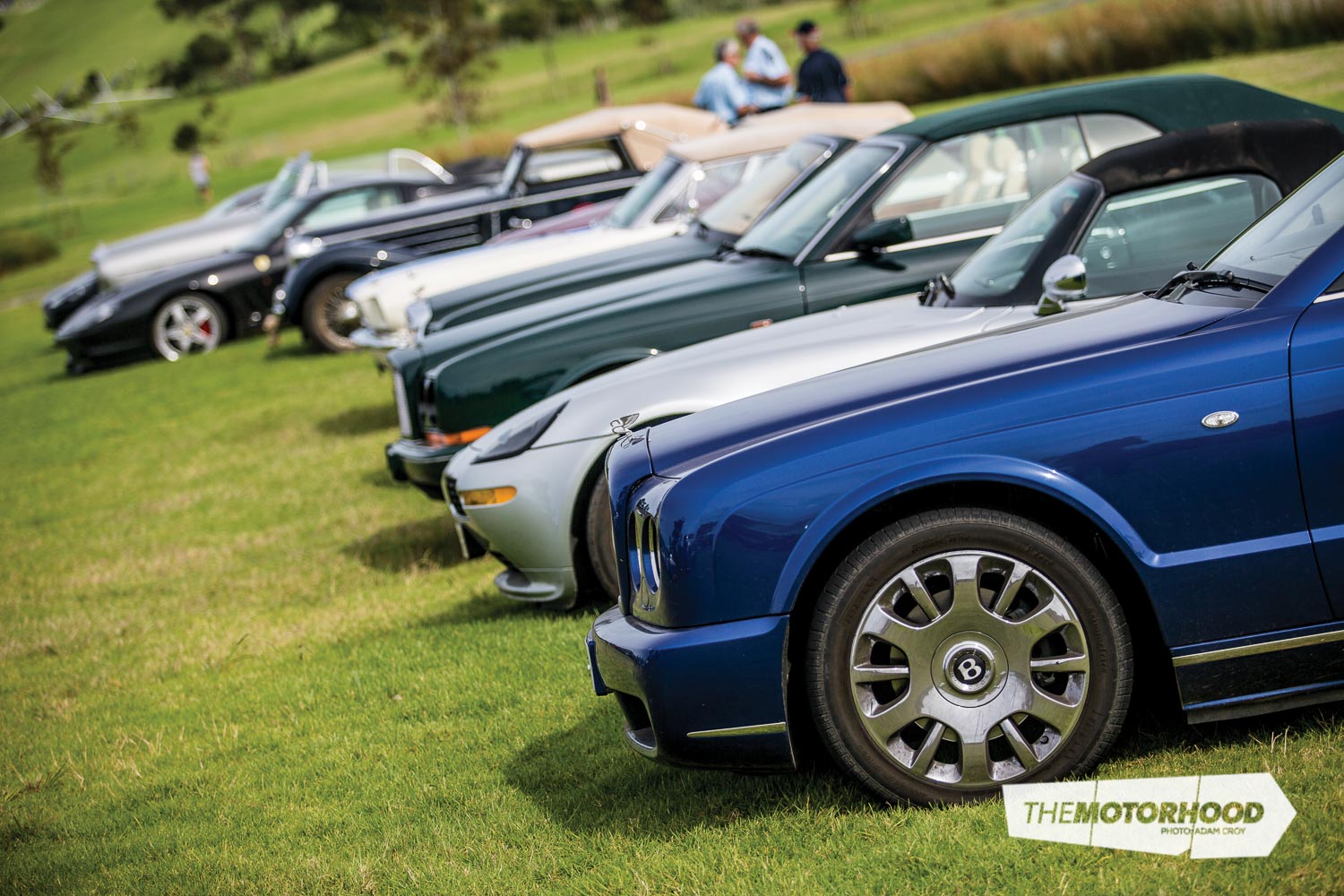
In the time we spent with Jewel Tours, it became apparent this is not simply a car tour for the rich and fancy-free — this is a group of passionate petrol heads who love travel and the fine things in life. Not once did I see a lick of the arrogance or one-upmanship you might expect from a group who undoubtedly have the net worth of a small African nation.
Jay Bullock has been looking after the mechanical side of things for the tour since its inception and supporting Jonathon on tours even longer. Jay’s businesses now mean that he can’t really afford the time to be on the tools for these tours, but loyalty to Jonathon sees him on every one, keeping old cars alive. His businesses are in the logistics arena on both sides of the pond, so he’s also the man ensuring the vehicles get to their destinations safely and back home in the same fashion.

For the vehicles to be road legal in New Zealand for the duration of the tour (some are left-hand drive; some possibly wouldn’t pass a warrant of fitness), they all must have a ‘Carnet’, which requires a bond equalling the value of the car be lodged with the New Zealand Government for the duration of their stay. This ensures the car won’t be sold while it’s here, thus bypassing import regulations.
The jewel that is New Zealand
The New Zealand tour was organized and timed to the nth degree. There was the occasional day or evening off, but, for the most part, the tour was as much about taking in the local scenery and culture as it was about driving the roads. Each evening, dinner and transfers to and from the restaurant were arranged, with a dress code indicated.
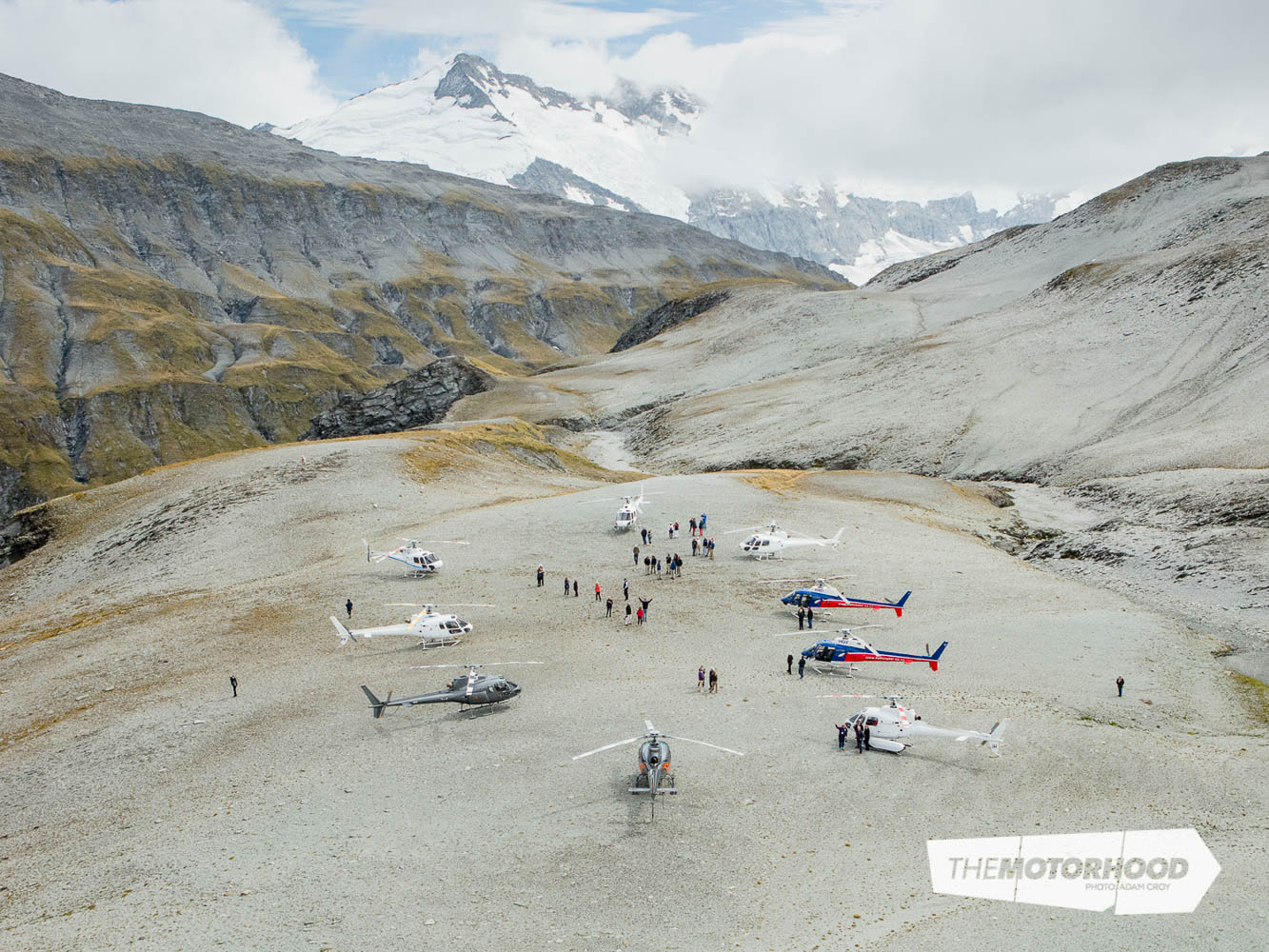
To give you an idea of the itinerary: The tour began in Queenstown then headed off to Glenorchy for a jet-boat tour up towards the World Heritage Area of the Dart River. The following day, the magnificent Milford Sound stepped up to the tourism plate. And not in a normal ‘we-went-to-Milford Sound-and-bought-a-postcard’ kind of tourist manner. Oh no. Jewel Tours put on nine helicopters, with multiple landings atop glaciers and mountains, followed by a private lunch put on by the well-known Wallis family.
This grandeur continued up the South Island, as the tour stays at the best hotels that can accommodate the group, dining at the very best restaurants that can seat them. As the North Island came into view, the group headed straight from Wellington to the Tui Brewery in Mangatainoka, famed for its appeal to the well heeled. Yeah, right.

The next several nights’ accommodations were regarded by those I spoke to as some of the most magnificent any of them had experienced — from Cape Kidnappers (and a round of golf for those with clubs) to Huka Lodge (the best of the best, from what we heard), and on to the SkyCity Grand in Auckland following a day at Waiheke, hand picking their crayfish from the rocks for lunch, before a final evening at the stunning Kauri Cliffs, in the Bay of Islands. We think you get the idea of what this trip was all about.
When we met up with the group, it must be said that the rich food and plentiful evening tipples while regaling each other about the day’s adventures appeared to have taken their toll on a number of the participants. While some of the ladies were immaculately presented, a few of the gents looked a touch worse for wear. A small price to pay!
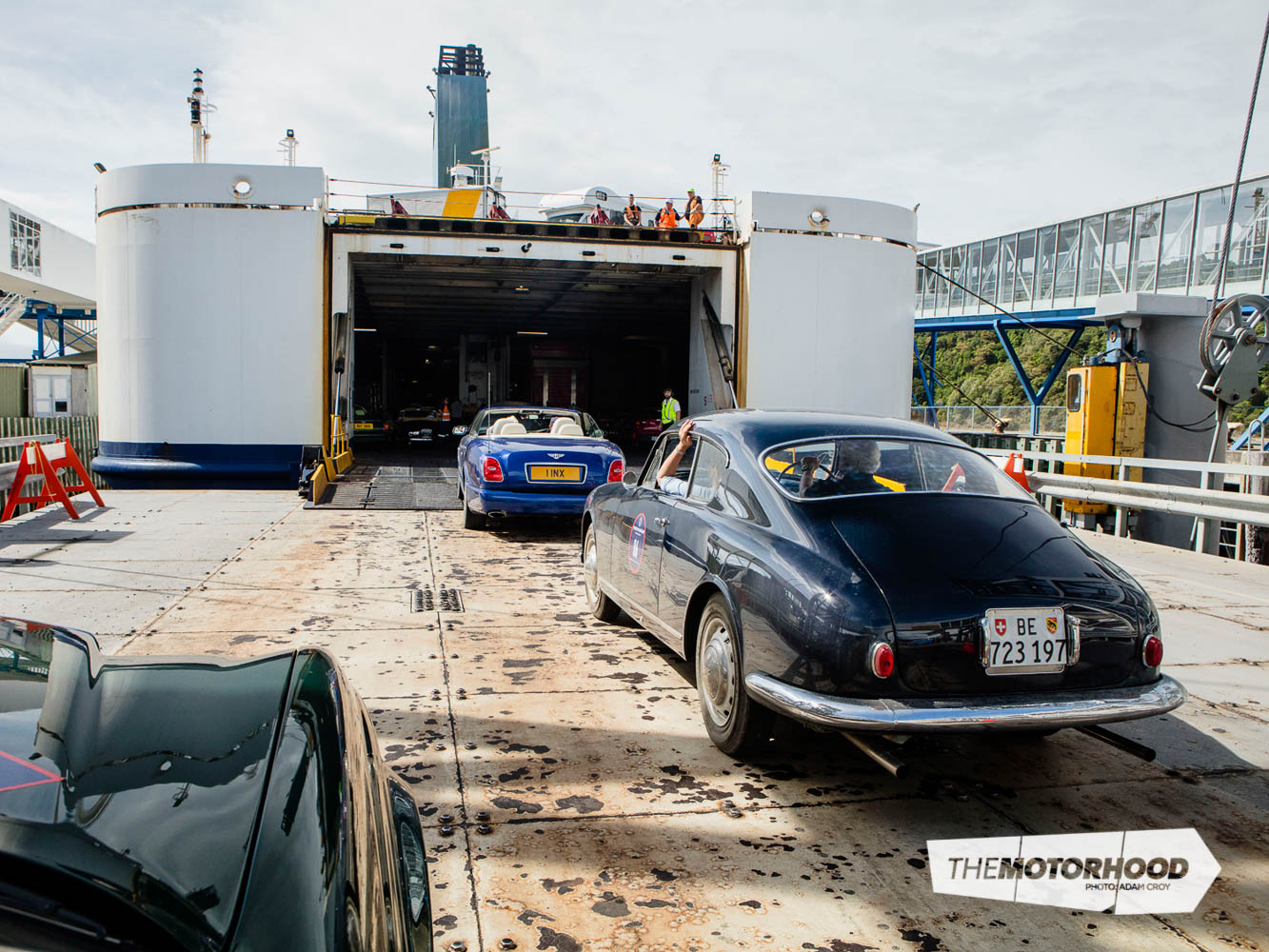
Regular tourists
Of those on the tour (43 attendees, four team members, and two Kiwi travel specialists on call), all were alumni of previous Jewel events, with some having been part of more than 20 in the company’s 13-year history. All tours are now at the point that they’re by invitation only — and don’t expect to be invited back if you don’t meet Jonathon’s idea of an ideal travel companion.
While the New Zealand tour was taking place, next year’s events (Scotland and Canada) were opened, and both were booked out within 48 hours. And what might it cost, I hear you ask, for all this glamour, fun and general indulgence? Well, as they say, if you have to ask, you probably can’t afford it.

The list of vehicles on the Jewel that is New Zealand Tour 2016 read like the dream garage of any number of classic and prestige car fans anywhere in the world. The owners and drivers of these cars certainly don’t take them for granted, and clearly love owning and driving them.
- Delahaye 135 MS Competition convertible 1938
- Aston Martin DB2 drophead coupe 1950
- Bentley S1 Continental drophead coupe 1956
- Mercedes-Benz 220S 1957
- Lancia Aurelia B24S convertible 1958
- Lancia Aurelia B205 1958
- Bentley S2 Continental 1962
- Ford Mustang cabriolet 1966
- Bentley S3 Continental drophead coupe 1966
- Chevrolet Camaro 1979
- Bentley Azure 1996
- Bentley Continental Sedanca 1999
- BMW Z8 2001
- Bentley Azure 2001
- Ferrari 575 2006
- Bentley Azure 2006
- Bentley Azure 2006
- Rolls-Royce Phantom 2006
- Aston Martin DB9 2008
- Bentley GTC 2008
- Rolls-Royce Phantom drophead coupe 2010
- Mercedes-Benz AMG SL63 2012
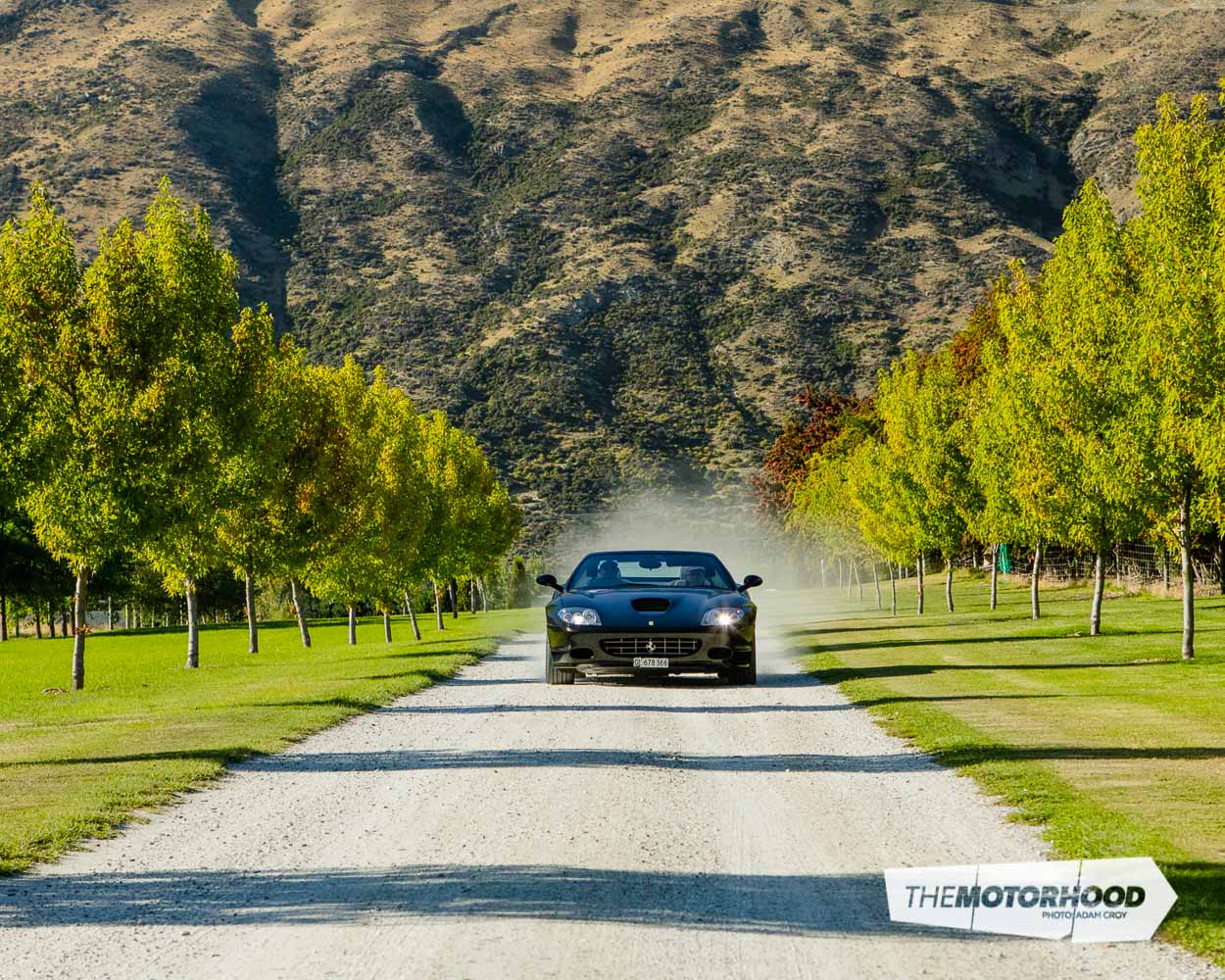
This was the final year of production for the 575M. Since it was replaced by the 599, the 575M has quietly become an appreciating classic from the Ferrari stable. With its thunderous V12 wail and GT shape, the 575M still looks and sounds as beautiful today as it did when it first rolled off the production line in 2002.
Ferrari 575M 2006
- Engine: Aluminium-alloy 65-degree V12
- Position: Front longitudinal
- Valvetrain: double overhead camshaft, four valves per cylinder
- Displacement: 5748cc (351–cubic inch)
- Bore: 89mm (3.5-inch)
- Stroke: 77mm (3.03-inch)
- Comp. ratio: 11.0:1
- Power: 384kW (515 brake horsepower) at 7250rpm
- Torque: 588Nm at 5250rpm
- Brakes F/R: Cross-drilled and vented disc, ABS
- Steering: Rack-and-pinion with power assist
- Suspension F/R: Double-wishbone with coil springs, gas dampers, anti-roll bar / Double wishbone with coil springs, gas dampers, anti-roll bar
- Transmission: Six-speed sequential with F1 paddles
- Top speed: 325kph
- 0–100kph: 4.2 seconds

The 1950 DB2 drophead coupé was Aston Martin’s first venture back into car building following the end of World War II and the first successful vehicle with David Brown at the helm of Aston Martin combined with Lagonda, following his takeover of both companies in 1947. This DB2 drophead coupé is one of only 98 ever ordered (102 were produced), making it a very rare car indeed.
Aston Martin DB2 drophead coupe 1950
- Engine: Water-cooled cast-iron inline-six
- Position: Front longitudinal
- Aspiration: Natural valvetrain, double overhead camshaft, two valves per cylinder
- Fuel feed: Twin SU carburettors
- Displacement: 2580cc (157–cubic inch)
- Bore: 78mm (3.07-inch)
- Stroke: 90mm (3.54-inch)
- Comp. ratio: 6.5:1
- Power: 93kW (105 brake horsepower) at 5000rpm
- Torque: 169Nm at 3100rpm
- Body/frame: Aluminium over tubular-steel spaceframe chassis
- Brakes F/R: Girling hydraulic drum
- Steering: Worm-and-roller
- Suspension F/R: Trailing-arm with shock absorbers, coil springs, anti-roll bar / Live-axle with coil springs, radius arms, Panhard rod
- Transmission: Four-speed manual
- Top speed: 177kph
- 0–100kph: 12.4 seconds
This article originally featured in the May 2016 issue of New Zealand Classic Car (Issue No. 305). Grab a print or a digital copy of the magazine now:
